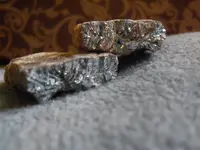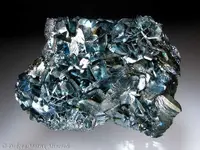Your density of 6.9 - what is the unit of measure? Are you using grams per cubic centimeter?
Alloys of antimony, tin and lead will melt under 900°F. Alloys of iron or copper won't.
Zamak 2 has a density of 6.8g/cm3 and is an alloy of aluminum, copper, magnesium, lead, cadmium, iron, and tin. It's used to die cast tools and machine mandrels and things like automotive castings. And there are seven different zamak compositions - and hundreds of similar alloys that all just look like cast metal.
And note that you can't add elemental densities together and average for the "alloy" density as the molecules arrange themselves in different "spaces". i.e. - rust (ferric oxide - Fe2O3) weighs more than iron and oxygen measured separately.
I worked at an iron and bronze foundry (Fairbanks Valve) but I can't look at a picture and tell the composition. Could be solder, white metal (pot metal), zamak or some Babbitt alloy of five or six different metals.





